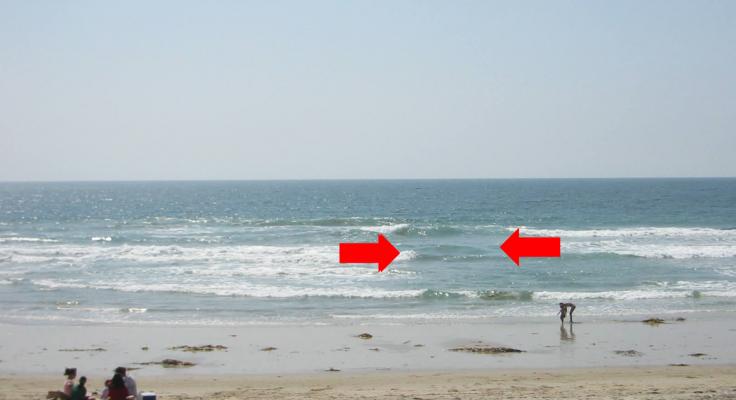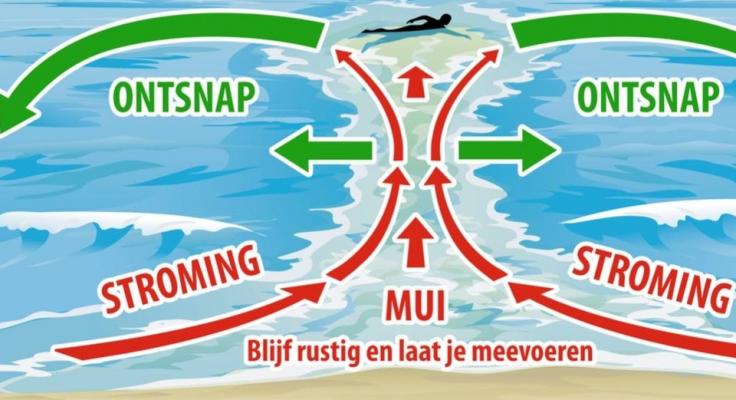Mules pose a great risk to swimmers on the coast. Many people don't make the right choices when they end up in a mule. It is important to be aware of the risks of the sea and know what to do in a dangerous situation.
Here we give you advice on how to recognize rip currents, what to do if you get into it yourself or see someone in a mule who has ended up in it.
What are mules?
There are sandbanks off the Dutch coast. Between sandbanks there are mules, where water flows into the sea (at low tide) or towards the beach (at high tide). A mule is on average 15 to 30 meters wide and can flow up to 100 meters into the sea, at a speed of up to 10 kilometers per hour; that's faster than an Olympic swimmer!
How to recognise mules?
Recognizing a mule is difficult and takes some practice. The first step is to view the sea at some distance from the tide line. Mules are easier to recognize when you are higher up, for example on the dune, the beach entrance or the boulevard. Then pay attention to places where the waves do not break, flat spots or spaces in the line of breaking waves. Or in places where the waves in the surf deviate from the rest of the surf. Also pay attention to foam or 'dust' in the water drifting off the beach. Sometimes this water also has a different color. Every mule is different, and often difficult to recognize by people who are not trained in this. That makes mules dangerous. The risk of a mule depends on multiple factors, such as the height and strength of the waves, the tide, natural and artificial conditions, and a swimmer's skills and experience.
How do you avoid ending up in a mule?
Only go into the sea at locations where a rescue team is supervising. Ask a lifeguard for information about the circumstances. They can tell where mules are and what the risks of the sea are. Those who cannot swim well should not go further than the knees into the water. On a beach without a rescue brigade, it is important to recognize mules and to know how to get out of them. Always take a flotation device with you when you do go into the water!
What to do if you end up in a mule?
Whoever ends up in a mule, must be aware that a mule never pulls you under water, but will make you drift off the coast. The most important thing is: stay calm. Try to attract the attention of the rescue team or bathers by shouting and waving for help. Let yourself float with the current. Never try to swim against the current; then you get tired and you run an increased risk of getting into further trouble! The most important thing is to stay afloat. If you can swim well, you can swim parallel to the shore; that's how you get out of the mule. If this does not work: let yourself be carried away with the current behind the sandbanks and the waves. The mule decreases in strength there. And wait for help.
What to do if you see someone in a mule?
Always leave a rescue of a swimmer from a mule to a lifeguard. It often happens that people who want to rescue someone from a mule become victims themselves. The best way to help is to immediately alert the rescue team and throw the drowning person a flotation device (for example, a bodyboard or a football) so that they can stay afloat. Always keep an eye on the drowning person!






